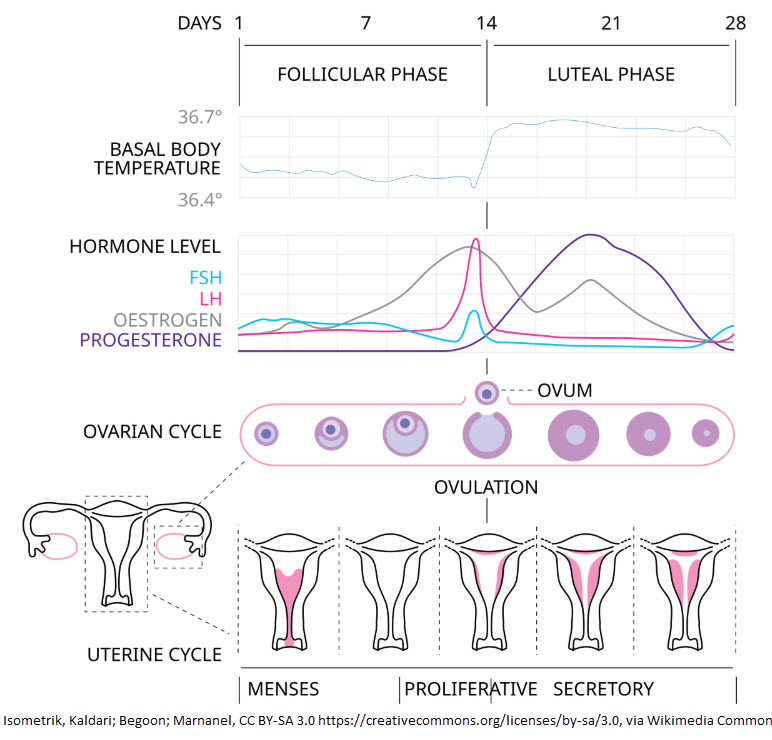(Caution: This month’s blog may be a bit awkward for male readers.) A patient recently came into the office seeking relief from symptoms related to her menstrual cycle. Her primary complaints were bloating and weight gain. She had a wedding coming up and wanted to look her best. Can manual lymph drainage (MLD) help with symptoms related to a woman’s period? Let first look at what occurs during a woman’s cycle.
The Cycle
Every month (if things work like they should), a woman goes through a series of steps through which the body prepares for possible pregnancy. The cycle typically lasts 28 days (but the range varies from 21 to 35 days). And it’s regulated by hormones. (If you’ve read past blogs, you may have learned hormones can cause swelling because of how they influence the permeability of the capillary bed, allowing fluid and proteins to escape the blood stream and enter the tissue space.)

Days 1-5: The period. This is when there is active bleeding as the uterine lining sheds. Hormone levels are lower, especially estrogen.
Symptoms: Cramping, bloating, fatigue, mood changes which subside towards the end.
Days 1-13: Follicular Phase. The pituitary gland releases FSH (follicle-stimulating hormone), stimulating the ovaries to produce follicles. One becomes dominant and matures into an egg. Estrogen increases, helping rebuild the uterine lining. Days 8-14 are the best times to get pregnant as there’s an increased chance the sperm will be present when an egg is released (on day 14), but days 8-19 are a conservative window.
Symptoms: Higher energy, mental clarity, clearer/glowing skin, increased sex drive, higher confidence, cervical mucus becomes clearer, stretchier, and more slippery (like egg whites) to help sperm travel easier as ovulation approaches.
Day 14: Ovulation. A few days before ovulation, there’s a surge in LH (luteinizing hormone) triggering the release of the mature egg from the ovary (ovulation) on day 14. This is the most fertile time; sperm can survive up to 5 days, and the egg lives about 24 hours.
Symptoms: Same as the follicular phase. In addition, the breasts and labia may become more sensitive, tender and/or enlarged.

Day 15-28: Luteal Phase. If there is no pregnancy, the empty follicle becomes the corpus luteum (Latin for “yellow body”), which secretes progesterone to thicken the uterine lining for possible pregnancy. If that doesn’t happen, the corpus luteum breaks down, progesterone drops and menstruation begins.
Symptoms: If no pregnancy occurs, PMS symptoms occur (the symptoms women usually want relief from).
PMS Symptoms
PMS stands for Premenstrual Syndrome. But there are numerous acronyms that substitute meaning: “Pass My Snacks,” “Prepare to Meet Satan,” “Pardon My Sensitivity,” “Pizza and Mood Swings,” and “Please Make it Stop” are among the contenders. The symptoms of PMS can include bloating, cramps, weight gain, mood swings, fatigue, constipation, headaches, food cravings. They’re caused by the rise and sudden, sharp drop of progesterone when there is no pregnancy. This hormone shift can affect brain chemistry, especially serotonin, which influences mood and emotion. When the changes are extreme or severe, it’s called Premenstrual Dysphoric Disorder.
How can MLD help? Find out next month!

